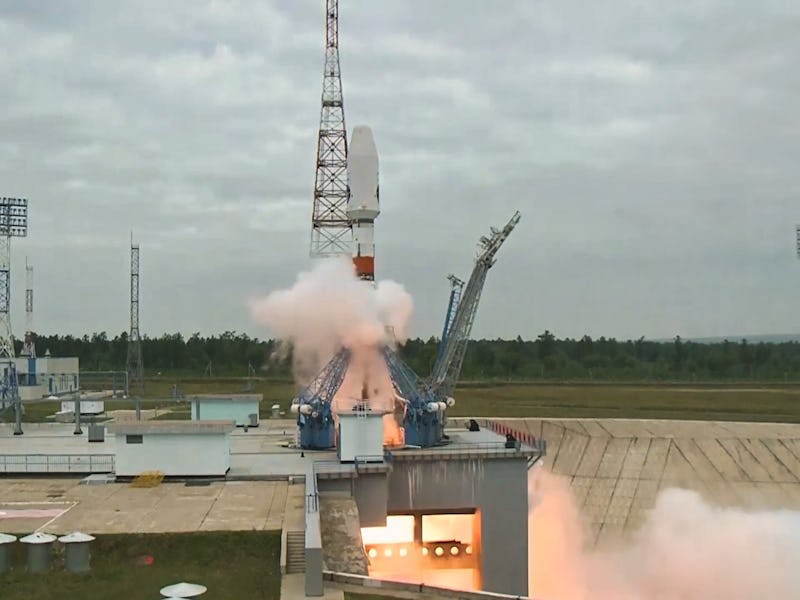Russia’s First Moon Mission Since 1976 Just Crashed in a Major Setback
Luna-25 is now the latest pile of space debris on the Moon.

Russia’s Luna-25 lander met an untimely end this weekend, according to the Russian space agency Roscosmos.
Luna-25 crashed on the Moon sometime on Saturday afternoon (Moscow time) after something went drastically wrong with its engine. The Russian lunar lander had been neck-and-neck with India’s Chandrayaan-3 lander in the race to become the first spacecraft to land near the Moon’s south pole. With Russia’s contender out of the race, India has a clear shot on Wednesday — but also a grim reminder that space is hard.
Russia’s Luna-25 lander “ceased to exist as a result of a collision with the surface of the Moon,” said Russian space agency Roscosmos in a statement.
Luna-25 was supposed to field-test landing technology for Russia’s next three lunar landers, then spend a year studying the surface near the lunar south pole — but the technology test evidently didn’t go so well. Mission controllers lost contact with the spacecraft on Saturday afternoon Moscow time, after firing the lander’s engine to shift the spacecraft into a closer orbit around the Moon to line up for a landing attempt.
“Most likely the braking thrust was either too strong, or it was in a wrong direction,” Natan Eismont of the Space Research Institute of the Russian Academy of Sciences told the New York Times. The institute led science operations on Luna-25, but Eismont was not directly involved with the lander.
The Luna-25 mission came nearly 50 years after its predecessor, Luna-24, which launched in August 1976. That mission successfully landed on the Moon on Aug. 18, 1976. During its mission, it retrieved a sample of lunar soil and returned it safely to Earth.
Luna-25 launched on Aug. 10 and would have beaten India’s Chandrayaan-3 lander to the Moon by just a few days.
Where the Space Race Stands Now
Luna-25 should have tested the technology that will be used on Russia’s next three landers: Luna-26, Luna-27, and Luna-28. Those landers, in turn, are intended to pave the way for an eventual joint lunar base with China near the Moon’s south pole. But the next three installments in the Luna series are already years behind schedule, and now Roscosmos faces the choice to redo Luna 25 (which means additional expense and additional delays) or fly the next mission without successfully tested technology.
Meanwhile, Luna-25’s crash leaves a path wide open for the other contender in the race to the pole, India’s Chandrayaan-3 lander. The Indian lander launched on July 14, nearly three weeks ahead of Luna-25, on a longer but more fuel-efficient course to the Moon, and is set to land on Wednesday. India’s last attempted Moon landing, the Vikram lander, fell silent about a mile from the lunar surface, and it’s not too hard to guess what happened next. Making it to the south pole first would be a huge win for India, which so far hasn’t successfully landed anything on the Moon.
Artemis II is scheduled to launch in late 2024, and Chang’e 6 lander, which plans to return rock and regolith samples from a site near the south pole, is set to launch earlier in the same year.